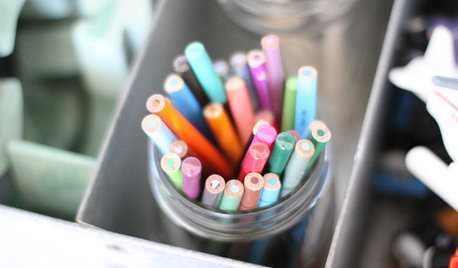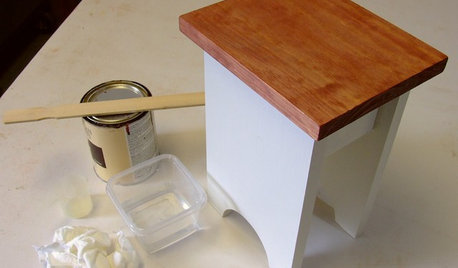Adding stain to clear coat OK?
cjccmc
17 years ago
Featured Answer
Sort by:Oldest
Comments (6)
russmahogany
17 years agokmealy
17 years agoRelated Professionals
Watauga Cabinets & Cabinetry · Bedford Carpenters · Birmingham Carpenters · Enumclaw Carpenters · Tacoma Carpenters · Lady Lake Flooring Contractors · Little Falls Flooring Contractors · Nashville Flooring Contractors · Orem Flooring Contractors · Severna Park Flooring Contractors · Surprise Flooring Contractors · Fayetteville Furniture & Accessories · Greenville Furniture & Accessories · Midland Furniture & Accessories · Hawthorne Furniture & Accessoriesbrickeyee
17 years agoUser
17 years agokmealy
17 years ago
Related Stories

DECLUTTERINGYour Clutter-Clearing Plan for the New Year
Tackle these tasks month by month for a decluttering strategy that will really pay off
Full Story
DECLUTTERINGDecorate with Intention: Clutter Clearing 101
Fearlessly face disorganized areas to find the home of your dreams
Full Story
FURNITUREWhy It's OK to Hate Your New Custom Sofa
It takes time to get used to bold new furniture, but dry your tears — the shock can be good for you. Here's what to expect
Full Story
GREAT HOME PROJECTSWhat to Know About Adding a Reclaimed-Wood Wall
Here’s advice on where to put it, how to find and select wood, what it might cost and how to get it done
Full Story
MOST POPULARWhat to Know About Adding a Deck
Want to increase your living space outside? Learn the requirements, costs and other considerations for building a deck
Full Story
FURNITUREAim High: What to Know About Adding a Library Ladder
Have books or shelves out of reach? Here’s how to get a library ladder that works just right for your needs
Full Story
KITCHEN APPLIANCESWhat to Consider When Adding a Range Hood
Get to know the types, styles and why you may want to skip a hood altogether
Full Story
KITCHEN CABINETSKitchen Cabinet Color: Should You Paint or Stain?
Learn about durability, looks, cost and more for wooden cabinet finishes to make the right choice for your kitchen
Full Story
CLOSETSGet It Done: Attack the Coat Closet
With a concrete plan and a little elbow grease, you can tame your jumble of jackets in a single afternoon
Full Story
DIY PROJECTSCool Tip: Mimic Stain With a DIY Color Wash
Get the look of an oil-based stain without all the bother, using this easy wash made with paint
Full StoryMore Discussions










cjccmcOriginal Author